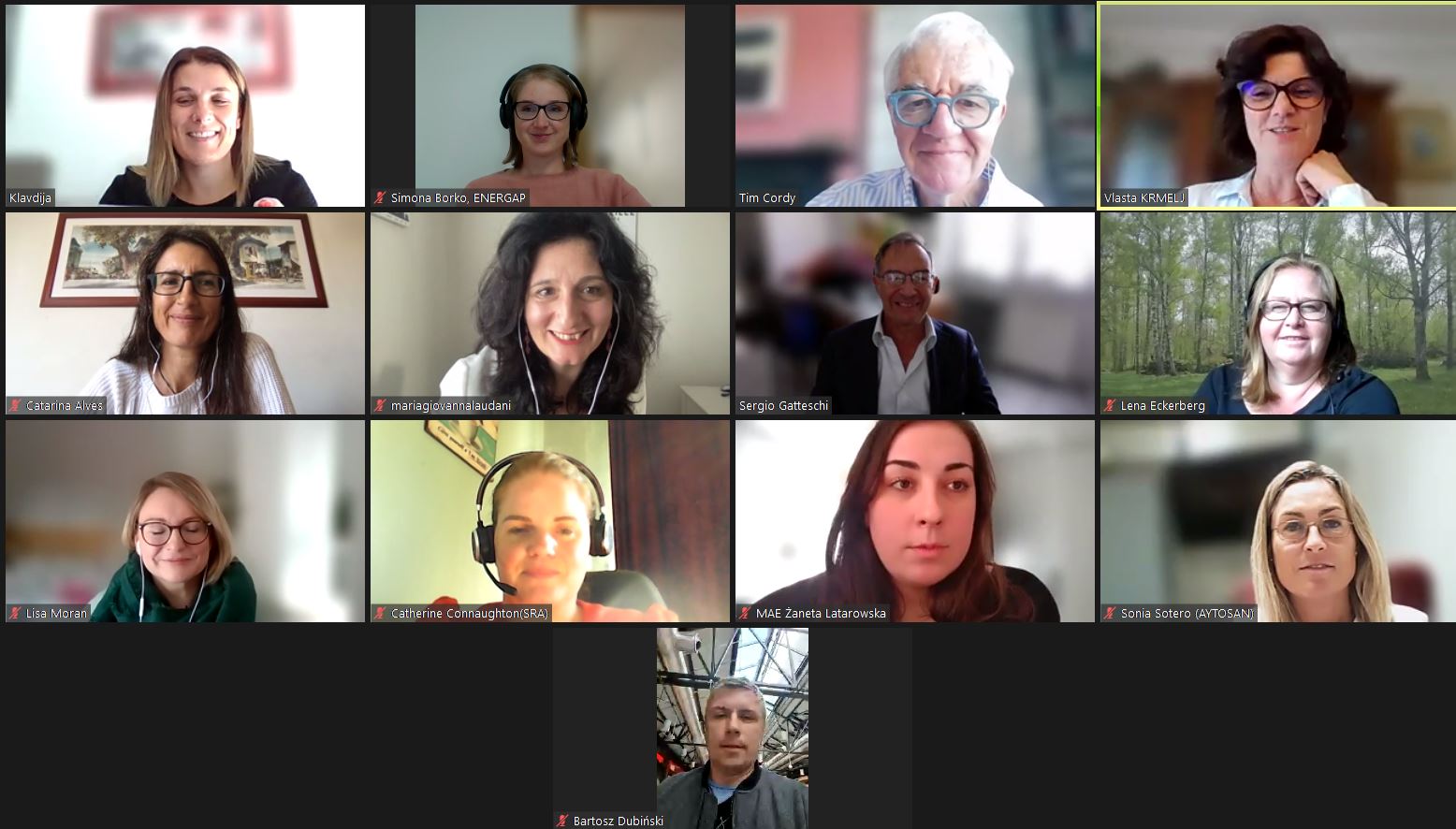
EMPOWER event with Capacity building workshop
Final EMPOWER event together with Capacity building workshop has been organized online on Friday 23rd 2022.
EMPOWER (More carbon reduction by dynamically monitoring energy efficiency) works on the exchange of good practices on dynamically monitoring energy efficiency in buildings, with special focus on the use of innovative financial instruments, in order to achieve more carbon reduction and to improve low-carbon economy policies.
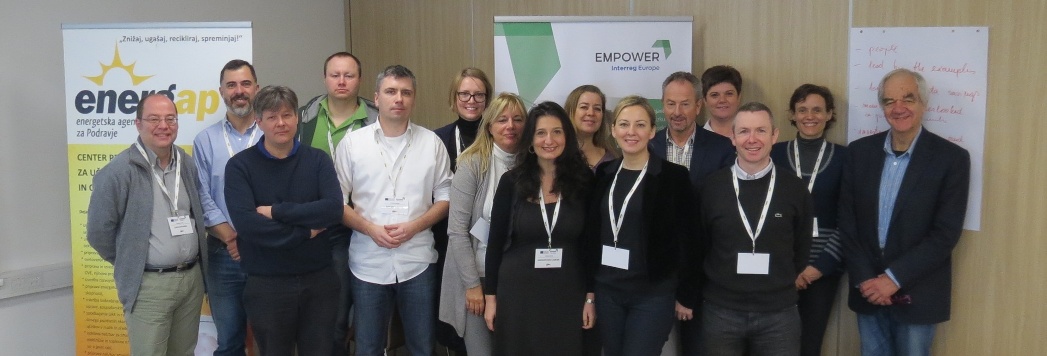
The project’s main objective is to reduce carbon emissions from buildings, particularly in medium-sized schemes, while also supporting jobs and growth in the local economy. We will improve regional policies by:
The project’s main outputs will benefit the building users, key decision-makers, SMEs working in energy, investors. They are:
New projects that innovate by applying cost-effective energy monitoring to reduce energy demand, using new technology.
Improved governance between different levels of government, using the plan–do-act-check principle and providing quality data to attract and reassure commercial investors
EMPOWER brings together 9 project partners from 9 countries (Slovenia, Sweden, Germany, Ireland, Portugal, Italy, France, Poland and Spain)
€2,462,302.00
Low-carbon economy
Empower will improve the implementation of regional development policies and programmes. It will reduce carbon emissions from buildings in the participating regions for 10 % by 2021 by improving the 9 policy instruments addressed by the project.
Empower will implement investment, organisational and optimisation measures in the participating cities and developed at least 2 cost effective energy monitoring systems. Partners will demonstrate that good energy management is a part of good governance. Monitored savings will reassure financial institutions about the rewards of long term energy management investment. Through the planned capacity building actions, all project partners and their stakeholders will improve their knowledge and deliver a higher-than-trend rate of carbon reduction. The key decision makers for the production of the partner's Regional Action Plans in the cooperation with the Operational Programmes Managing Authorities will play a crucial role in the durability of the project results.
Main features of this policy instrument
The target of a 20 % improvement in energy efficiency must be achieved by 2020 in accordance with Directive 2012/27/EU. It requires that each Member State ensures that 3 % of the total floor area of heated and/or cooled buildings owned and occupied by its central government is renovated each year. The TO4 of the Operational Progremme (OP) pointed out that the renovation of these buildings will be supported as a priority. In particular, the OP investment priority in which the policy instrument is focused is: supporting energy efficiency, smart energy management and renewable energy use in public infrastructure, including in public buildings and in the housing sector.
Why it should be improved?
In the lifetime of the buildings (new or renovated) many conditions occur that influence energy use and CO2 emissions. To sustain planned or achieved energy savings and CO2 reductions good monitoring and management system using ICT tools and processes based on the principle of plan–do-act-check should be used continuously. Many of them are available on the market but not all optimal for specific buildings. At the same time financial savings are good opportunity to payback investments. So called energy contracting and public private partnerships need financial mechanisms for energy refurbishment projects. Combination of different financial resources (EU funds, banks, private investors) will allow at least 4 times more investments than planned only in Cohesion fund.
Main features of this policy instrument:
The specific Investment Priority identified by the policy instrument is the 4c “Support for energy efficiency, intelligent energy management and the use of renewable energy in public infrastructures, including in public buildings and in the housing sector”. IP4c has the objective of promotion of energy efficiency in two ways: public sector and social housing
Integrated investments in energy efficiency in public infrastructure and public lighting.
Investments in energy rehabilitation of social housing buildings.
Investments in energy production technologies from RES for self-consumption.
Awareness-raising actions to improve the energy performance of dwellings in social housing
Why it should be improved?
Although IP4c addresses energy efficiency and subsequent reduction of carbon emissions from public infrastructures, there are no specific mention to innovative actions like the use of ICT tools for energy management and monitoring, which could be of great interest to public authorities. Almada manages a total of 260 residential buildings (2250 dwellings - social housing) and roughly 50 services buildings and 40 primary schools. Monitoring real energy consumption and above all comfort parameters is crucial to evaluate effectiveness of the interventions. Being able to quantify the services provided by the building is essential: increased comfort is not properly evaluated in financing programs and it is the most important benefit in social houses.
Main features of this policy instrument
Scheme 1 under Priority 4(c) “Apartments”, where the policy instrument identifies that 2,000 apartments are located in large flat complexes in Dublin city, these 5 story maisonettes do not meet new building standards of energy efficiency and require a substantial energy retrofit to address this as well as renewable energy use, condensation risk. Flat complexes, albeit on a smaller scale, have also been identified in the cities of Cork and Limerick which have similar deficiencies in terms of thermal performance and comfort levels and will be subject to similar thermal improvement works.
The Operational Programme aims to provide funding for energy retrofitting of up to 2,000 thermally deficient and older social housing units and facilitate a transition to renewable energy use in public housing through the implementation of a number of pilot projects. Installation and design of energy efficiency retrofit works will be performed to National Building Regulations and Legislations.
Why it should be improved?
A principal objective of the Social Housing Retrofitting is to meet Ireland’s commitments in relation to CO2 reduction targets for 2020. Although the Policy instrument is concerned with carry out the physical retrofitting, EMPOWER will be in addition to the physical work, it will identify good practices in the use of ICT systems for energy management and developing specifications for ICT applications which will enhance the overarching objective to reduce carbon emissions.
Main features of this policy instrument
In order to improve a territorial situation related to the poor energy efficiency of existing public buildings with energy consumption of 160 kWh / sqm (e.g. schools), (residential and non-residential), a specific investment priority in the OP was addressed: support to energy efficiency, intelligent energy management and renewable energies in public infrastructure and buildings, and in the housing sector. In order to do this The following measures have been taken into account:
refurbishment of individual buildings or groups of buildings,
use of smart remote control systems and of an energy management system,
monitoring and optimization of energy consumption (smart buildings) and polluting emissions according to EU’s climate policy, even with the use of technological mix
Systems for self- consumption could be also installed where they could be functional and useful to increase the energy efficiency of the intervention renewable energy production.
Why it should be improved?
Regional authorities are facing the challenge of planning and implementing the sustainable energy transition for their territory. A reduction of energy saving is necessary because it will reduce costs, carbon emissions and risks. By reducing the demand for energy and by controlling it to make it more predictable. A concrete regional action plan implementation will improve the design of the policy instrument addressed.
The policy instrument is focused on the Priority Axis N 3 – Sustain Energy and ecological transition in Brittany, Specific objective 3.2 – Reduce the carbon footprint of the buildings in Brittany and it targets:
The refurbishment of social housing within regional climate and energy policies, prioritising dwellings with electric heating and a consumption greater than 330 kWh/m2/year. Works shall include thermal insulation and the expected consumption reduction has to exceed 40 %.
Innovative projects in terms of intelligent buildings and districts integrating renewable energies
Planned use of financial instruments
In addition, and given the local characteristics of human settlements in Brittany - strongly based on private ownership - targeted actions will more specifically address the private residential housing.
Actions addressing shared ownership through financial engineering shall be privileged. Lorient already experiences crowdfunding in RES and looks actively into implementing the various possible financial instruments (e.g. French State Investments for the Future, Eco-Zero Interest Loans, "pay as you save" PPP based mechanisms, etc.
The improvement of the policy regards monitoring tools, target values and procedures as well as bio-sourced insulation material.
Main features of this policy instrument
The policy document implements 45 regional objectives that supplement 16 environmental quality objectives and 1 horizontal objective adopted by the Swedish Parliament, describing the quality and state of the Swedish environment in the long term. 98 actions are described to achieve the objectives, where of 15 refers to climate actions.
The specific strategic action addressed is: 5. Capacity building for increase the knowledge in sustainable building and to contribute to an energy efficient society. This will be done:
by forming a regional supporting network for municipalities and construction companies with the aim of increasing the skills of energy performance
by supporting the municipalities in the process of developing energy efficient buildings with ICT energy management
Why it should be improved?
By improving the policy document it will facilitate the process of the municipalities and companies in the region to boost up the speed of the energy efficient work and to reduce the carbon emissions from buildings. By gaining experience from best practice within the region, outside the region and transnational experiences. The usage of ICT systems for energy management is overlooked in the policy document. The collaboration and knowledge exchange between the local and regional authorities, as owners and managers of real estates with large potential of EE by energy management systems, shall be improved.
Main features of this policy instrument
Priority: support of energy efficiency, intelligent energy management and renewable energy sources utilization in public and residential buildings.
The policy instrument promotes projects dealing with:
renovation of public utility buildings (along with housing stock);
construction and modernization of cogeneration units producing electricity and heat.
Financial support will be channelled into residential (multi-tenant houses) and public sector since both generate, statistically, enormous energy consumption. The policy supports activities aiming at the highest energy efficiency within the projects, leading to complex renovation of buildings.
Why it should be improved?
The policy instrument refers mostly to general improvement of energy performance in the public utility buildings aiming at effectiveness of investment – balancing energy and financial aspects. The first step towards improving energy efficiency of existing buildings is to perform an energy audit with particular attention to the assessment of the energy performance of the building envelope and technical infrastructure. Energy auditing and Monitoring is an essential part of a comprehensive facility management process but not addressed in the policy concerned. EMPOWER might develop solutions for increasing energy efficiency and renewable energy usage in public infrastructures with the use of Energy Performance Contracting (EPC) method and available ICT tools.
STARK III plus EFRE objective is to enhance the energy efficiency & CO2 balance of public buildings in Saxony-Anhalt. The directive finances energy refurbishment of public buildings (educational buildings, sports & cultural facilities) with a high potential of reducing CO2 emissions & energy consumption. The energy savings obtained improve the economic efficiency of the public building stock. STARK III plus provides a total funding of around 365 Mio EUR (241 Mio. ERDF) in the OP ERDF 2014-2020.
Funding rate is 70 %. In addition to the grant funded through STARK III plus, the directive offers a loan, free of interest, for the remaining 30 % own contribution by IB-LSA.
The STARK III plus directive asks for regular monitoring of CO2 reduction as part of the annual progress report on energy &carbon savings of every building refurbished. Nevertheless the existing monitoring does not provide sufficient information for the calculation of payback.
Two factors important for achieving potential savings are not explicitly being tackled by the directive so far. Behaviour of users of buildings & the capacity of facility managers to handle the new technology.
The original idea of the loan scheme was that it should be paid back through the savings realized during 10 years after completion of works. Experience from STARK III (2007-2013) shows that savings are probably not enough to pay back the full amount of the loan
Main features of this policy instrument
The main purpose of the programme is to foster employment creation in sectors of high added value by improving the competitiveness of the regional economy. The specific objective of the policy instrument is 4.3.1. “Improving energy efficiency and reducing CO2 emissions in buildings and infrastructures and public services”. The expected RESULTS are “Transforming public buildings and residential character of Cantabria referents in energy efficiency and sustainability”.The implementation of these measures will reduce final energy consumption in public infrastructure in 2000 ktoe /year.
The Specific Needs in Cantabria refer to:
Improve public awareness on energy consumption and support the refurbishment of public/private infrastructures.
Increase residential energy savings and reduce waste production and high consumption of water per capita.
Convenience of introducing energy management systems and certification in public infrastructures, including public buildings, and housing.
Why it should be improved?
A principal objective of the OP is to address the economic, environmental and social challenges identified in Cantabria, consistent with the strategies for smart, sustainable and inclusive growth.
Although the Policy instrument is concerned with carry out the physical retrofitting, the EMPOWER project will be in addition to the physical work, identifying good practices in the use of ICT systems for energy management

Final EMPOWER event together with Capacity building workshop has been organized online on Friday 23rd 2022.
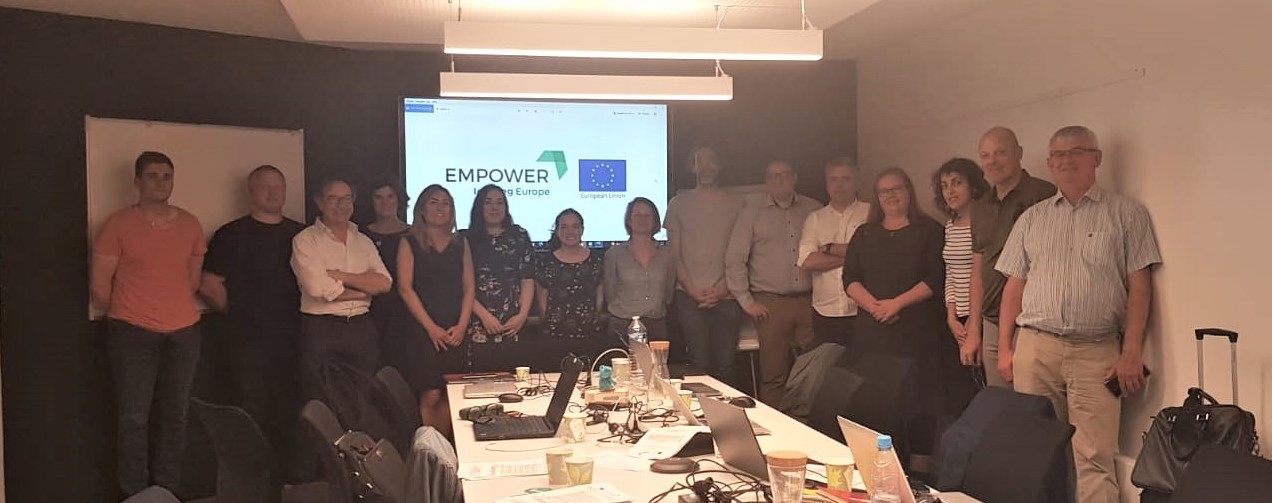
After almost 6 years the EMPOWER project is ending and the last project Newsletter is released.
Energy monitoring - Good Practices Guidebook displays 7 of the good practices relating to Energy Monitoring and how they can be implemented.
The Southern Regional Assembly in conjunction with 3CEA through the Interreg Europe EMPOWER project lunched an Energy Poverty Guidebook 2022.

The Southern Regional Assembly was delighted to host the Interreg Europe EMPOWER Energy Poverty Technical Workshop on the 23rd & 24th March 2022.
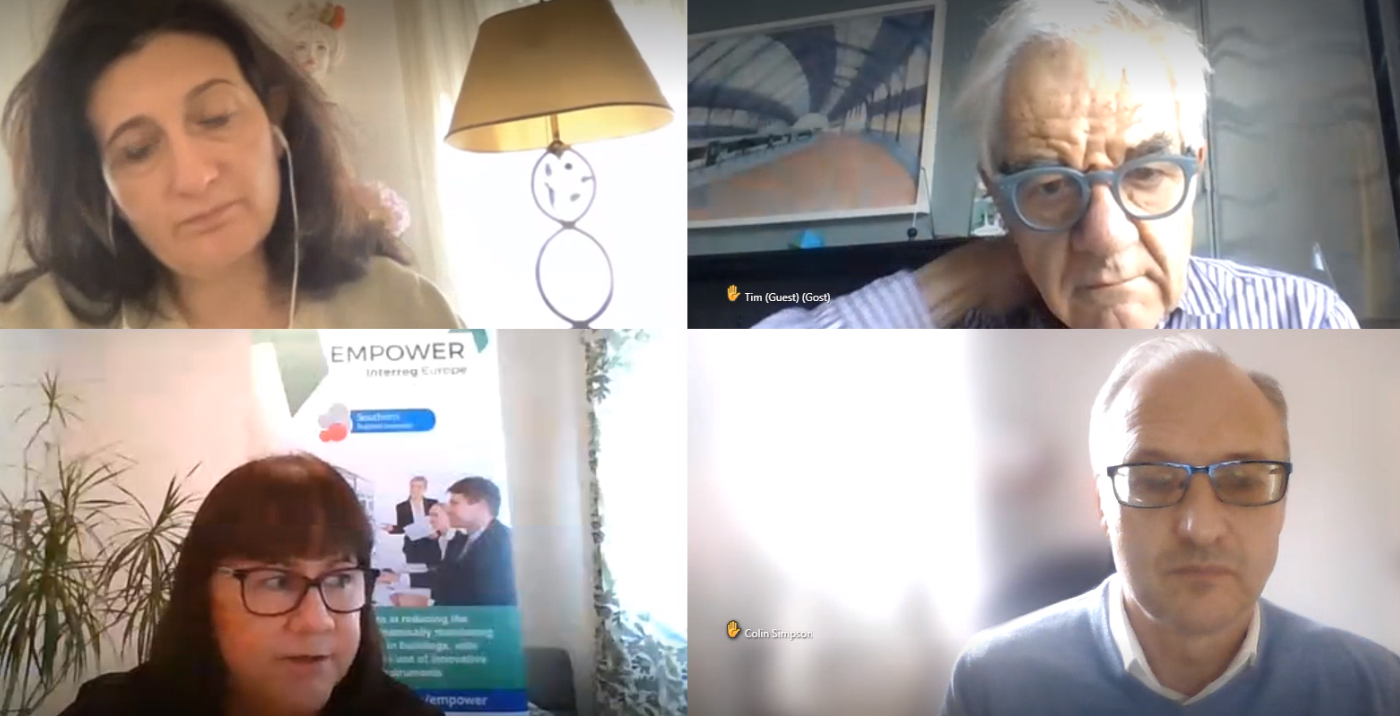
EMPOWER is continuing with its activities
Final Empower event will be organized in Florence with ARRR on Friday 26th 2021 with local stakeholders.
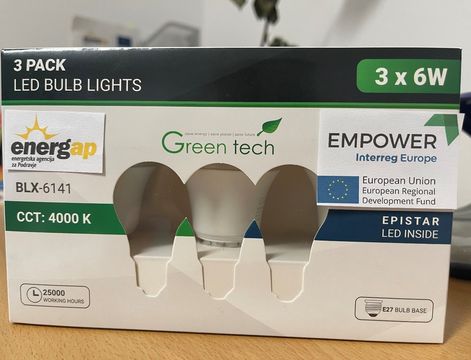
RAP implementation of energy monitoring and management system in social houses in Maribor
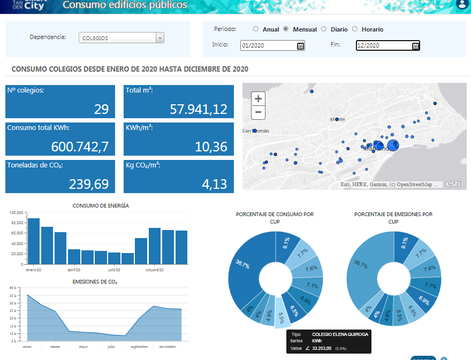
Over these months, Santander has continued with their RAP implementation.

In this edition you will find information about EMPOWER’s activities over the past months despite the impact of the COVID-19 crisis.